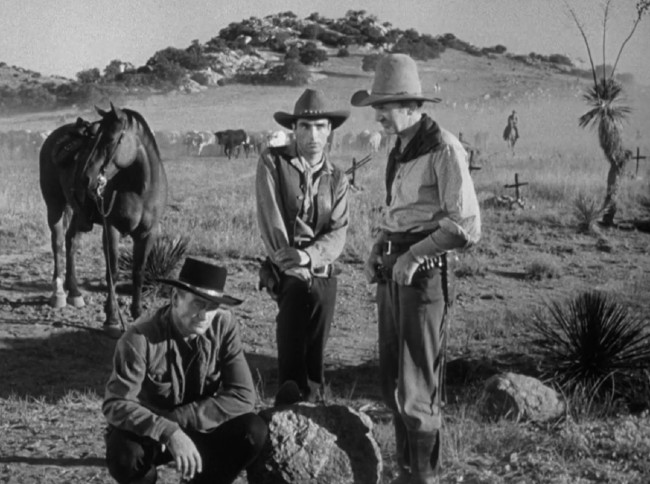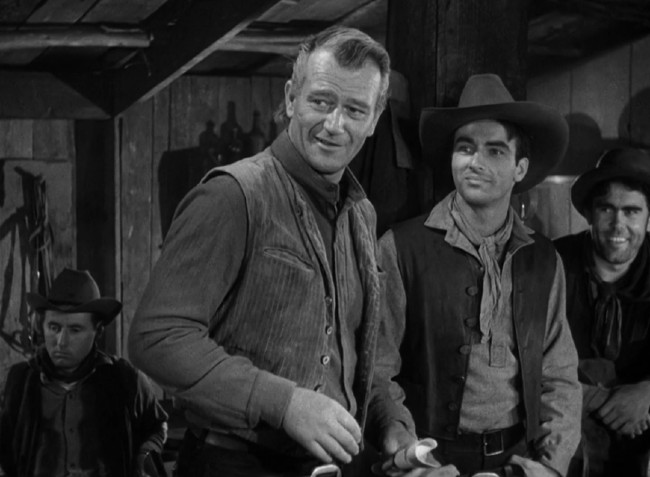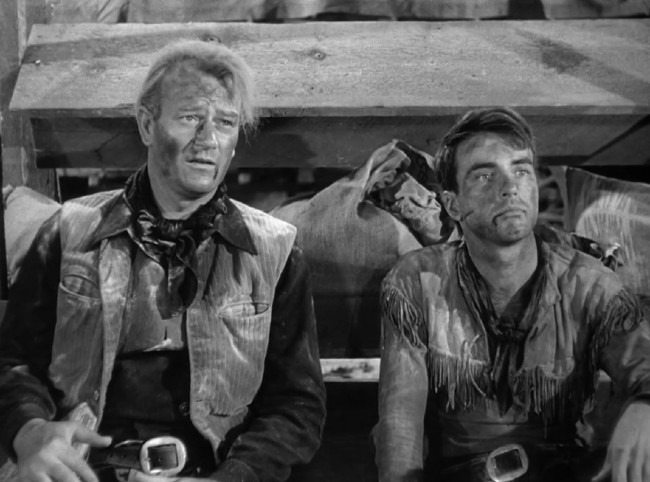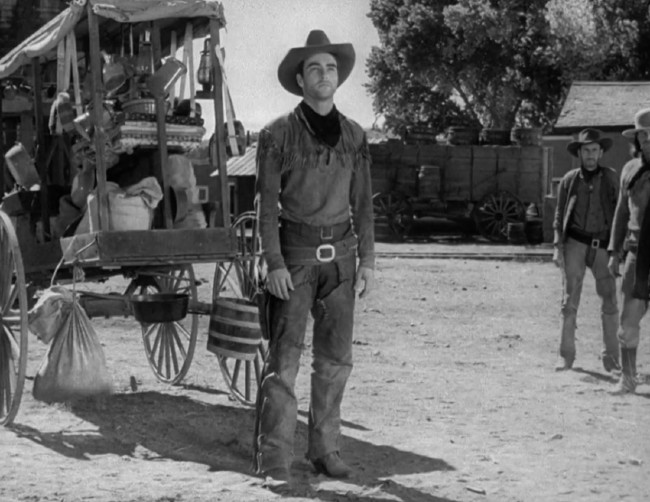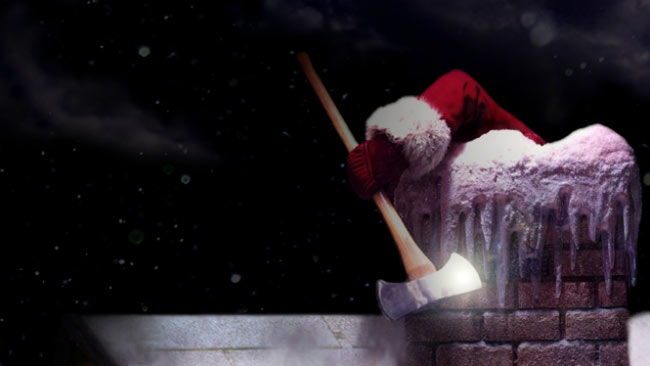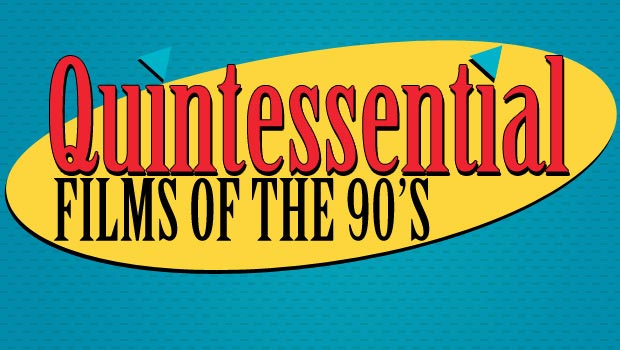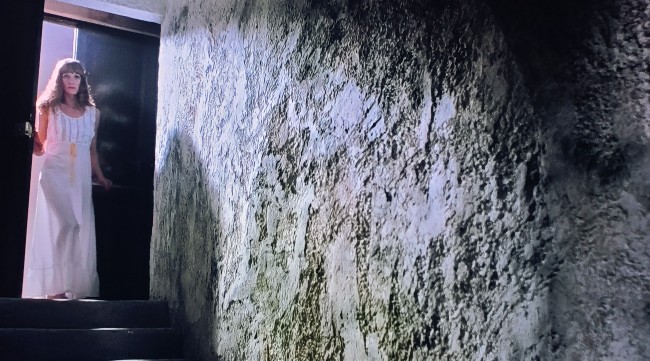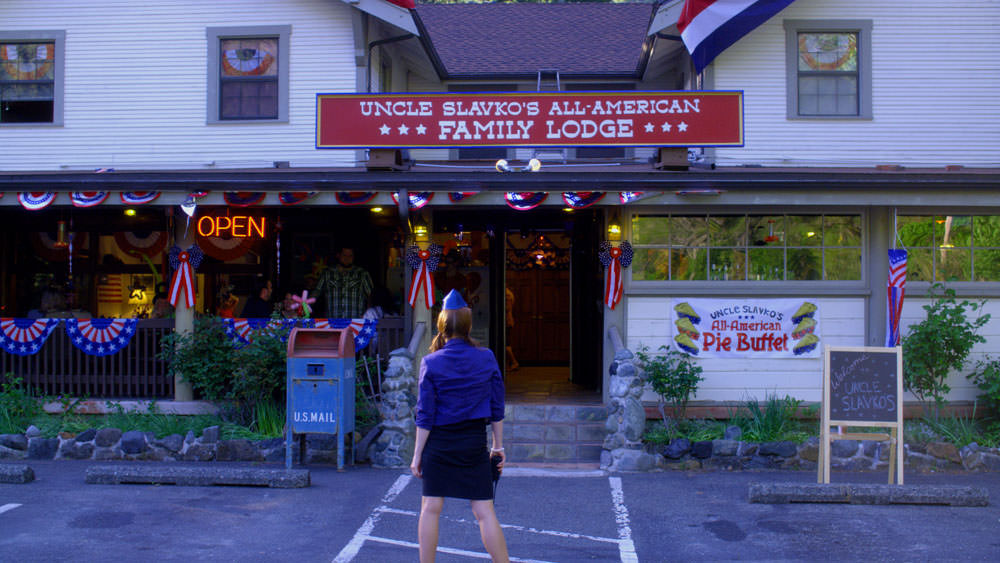Red River Stampedes Through The National Film Registry
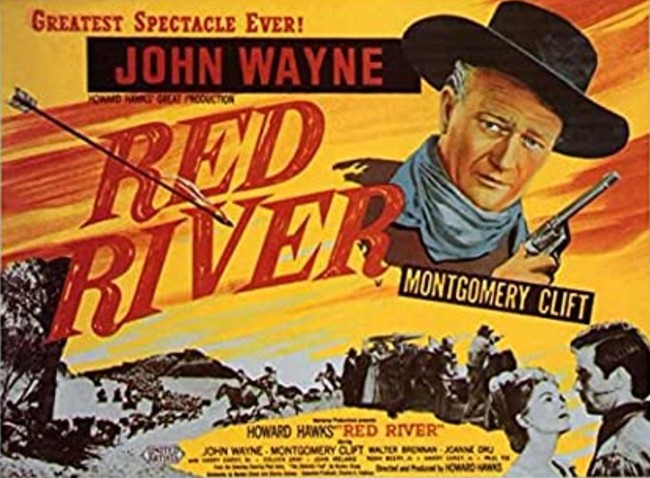
Our journey through the National Film Registry takes us down Howard Hawk’s Red River and all its twists and turns.
Red River has been called the greatest Western of all time. Discounting Howard Hawk’s clean up job on Howard Hughes’s The Outlaw, Red River was his first foray in the Western genre. Released more than seventy-years ago the movie still inspires film makers. Whether it’s THE greatest Western or one of the best Westerns ever made is up for a never ending debate with no real answer.
Red River
Red River stars John Wayne as Tom Dunson, Montgomery Clift as Dunson’s adoptive son Matt Garth, and Walter Brennan as Nadine Groot, Dunson’s loyal companion and cook. A host of character actors who would appear in countless Westerns during the Golden Age of the Hollywood Western round out the cast. Hank Worden, Simms Reeves in the movie, would act with Wayne in eight more movies and decades later appear as the Waiter in David Lynch’s Twin Peaks.
Red River starts with Tom Dunson leaving a wagon train heading to California and his girlfriend to settle land in Texas. There’s only one catch. The land Dunson claims as his own is already owned by someone else. When he’s faced with the rightful owner’s representatives, two Mexican rancheros, Dunson kills one and sends the other with a message that land now belongs to him. Dunson’s character is already being established as someone who does what they want, when they want, and no one will stop him from achieving his goals.
Western Expansion
Using a brilliant piece of editing involving multiple shots of cattle, cowboys, and Dunson’s voice over Hawks advances the movie fourteen years. At the same time Hawks manages to explain Manifest Destiny, western expansion, and the notion that might makes right. The next scene opens with an older Dunson explaining to the audience through an older Matt and Groot that the Red River D, named after the nearby Red River, is bankrupt. The Civil War, which Matt just returned from, took a toll on the cattle market in Texas. The only way to save the ranch is to get the herd, more than 9,000 head of cattle, to the railroad in Missouri. The great cattle drive consumes most of the movie’s runtime.
An interesting thing happens on the way to Missouri. Dunson, becomes more ruthless in his fervor to get the cattle to Missouri. He doubles down after a stampede wrecks one of the supply wagons and needed supplies are lost. He drives the men even harder, making them work twice as hard on less sleep and food. Dunson starts to shoot anyone who offers a different opinion on their plight or tries to desert from the drive. The growing chorus of disgruntled cowboys only grows as the drive continues.
Mutiny on the Range
The final straw comes after Dunson wants to hang two men for desertion and theft. The cowboys have become mutineers. Matt relieves Dunson of his duties as head of the cattle drive. Like Fletcher Christian sending Captain Bligh off in a life boat in Mutiny on The Bounty, Matt sends Dunson off with a horse and supplies back to the Red River D. Dunson, like Captain Bligh, promises Matt he will find him and kill him. Matt decides to turn the herd towards Abilene, Kansas.
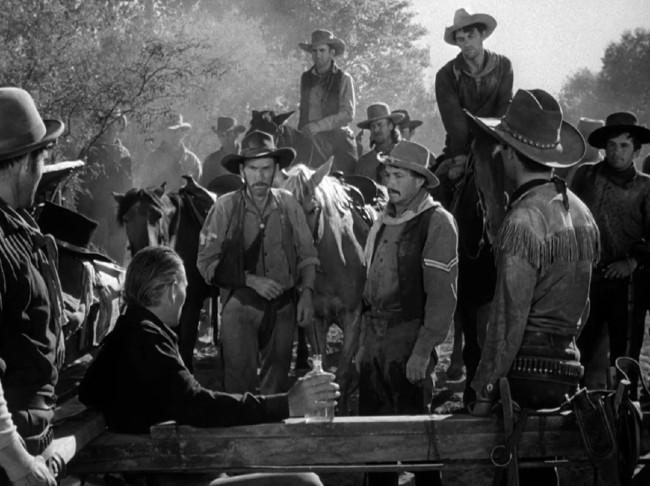
Westerns of a certain era, Red River definitely falls in this era, wouldn’t be complete without two things: attacking Indians and a circled wagon train repelling an Indian attack. Dunson single handily fights off an Indian attack early in Red River. Matt, as a child, is the only survivor of an Indian attack. On the way to Abilene Matt stops the drive to help defend a circled wagon train fight off an Indian attack. The Indian attack, however, is only a means to introduce Tess Millay (Joanne Dru). Millay is the obligatory love interest, but she also serves another purpose in the movie. She’s there to remind Matt not to become like Dunson.
Hollywood Endings
Red River has a magical Hollywood ending. The movie does a good job sowing doubt in the minds of the audience that there was no railroad in Abilene. A lot of this doubt is due in no small part to Clift and the actors surrounding him. However, there was no doubt there wouldn’t be a railroad. Like a miracle, they not only find Abilene but they find a town full of residents foaming at the mouth for beef. Even the train on the much sought after railroad stops to let the herd pass into town. The residents cheer the cowboys and the herd like heroes. There’s even the rich savior who offers Matt more money than he would have received in Missouri. To sweeten the movie even more Millay meets Matt in his room, paid for by the same rich savior, and the two embrace as lovers. Everything is tied up in a nice bow except for the inevitable return of Dunson.
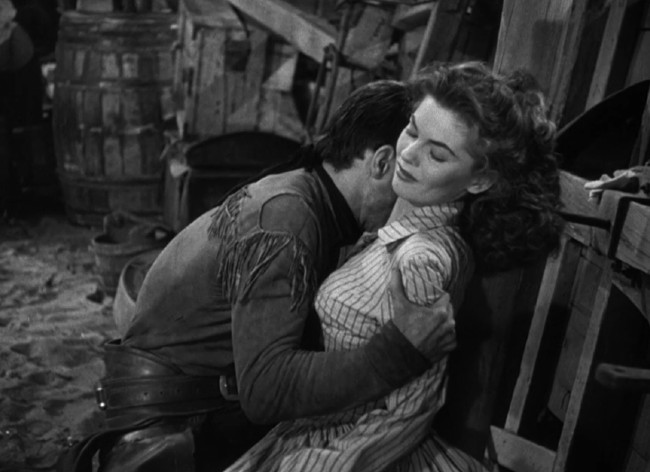
Hollywood has had a fascination with nice, tidy endings. It would be years before audiences would see movies with ambiguous endings. Even today audiences would rather see a definitive end if the ending doesn’t lead directly into a sequel. Red River‘s ending is no exception. Dunson finds Matt waiting for him in the streets. Dunson only has murder on his mind. When Matt doesn’t take Dunson’s bait the two go fisticuffs in the streets. Millay breaks the two up with a speech and tears before any real damage can happen. Dunson and Matt make up and the movies ends with the happy resolution everyone wants to see. However, it’s the wrong ending.
The Wrong Ending
The ending as it is betrays the previous two hours of the movie. Dunson is a man who always has things his way no matter the cost. He’s killed men who have stood in the way of achieving his goals. The last half of the movie had Matt and the other cowboys looking over the shoulders. Dunson was a bogeyman lurking in the shadows. Every noise in the night was Dunson ready to jump out to end their lives. Nothing in the course of the movie has shown that Dunson would ever change his ways.
Matt has been portrayed as a man who has been living in Dunson’s shadow, but just below the surface is something that wants to break free from Dunson or at least have his own identity. Dunson continually dangles the promise of adding Matt’s name to the Red River D brand. The mutiny Matt leads is his first step walking out from Dunson’s shadow. Matt’s fully out of Dunson’s shadow after he brings the herd safely to Abilene. He’s hailed a hero which is something Dunson could never be called.
Showdown in Abilene
The final showdown in the streets of Abilene should have been a traditional showdown with Matt winning. Dunson has been shown to be quick and deadly with a gun. He’s also been shown to goad people into duels they possibly couldn’t win. Matt winning the duel against Dunson would have done xxxx things. First, Dunson’s long shadow would have been dispelled for good and Matt would have gained agency over his own life. Second, and maybe the most important fact, Dunson would have been held responsible for the killings the cowboys and the ranchero.
Red River is a movie about American grit and determination. The cattle drive isn’t a cattle drive it’s a symbol of the man versus nature conflict. American grit and determination brought the herd to Abilene. Matt, not Dunson, being the head of the drive is Hawks’ embodiment of the American grit that conquered nature and tamed the West. By allowing Dunson to live Matt once again becomes the second fiddle in the overall narrative.
The Best Western Ever
Is Red River the greatest Western of all time? Is it one of the best Westerns of all time? Maybe it is and maybe it isn’t, but it is the movie that introduced the world to Montgomery Clift. John Wayne’s star would continue to rise and would last thirty-five more years until his death in 1976. Hawks would go on to direct three more influential Westerns. So, maybe Red River isn’t the best Western ever made but it paved the way for the countless Westerns that were to follow.

